Who among us would be caught dead without her handbag?
To the handbag-obsessed, personal space is a moving experience. Which explains the centuries-old addiction to our purses. The handbag industry generates many tens of billions of dollars a year and, according to one survey, the average woman owns six—with an average price range of $40 to $65. At least that’s what we’re admitting to. Consumer goods guru Kellie Styring, interviewed on cnn.com recently, reported that 95 percent of women aged 18 to 64 carry a purse every day, with two or three favorites. That works out to 212 million “active” purses at any given time. As part of her study, Styring examined the contents of 100 purses and found that they housed an average of 67 items, ranging from the mundane (lipstick, phones and gum wrappers) to the highly unusual (knives, marital aids). One purse produced a summons for prostitution.
Sigmund Freud also had a thing or two to say on the subject. In his Interpretation of Dreams, he associated the purse with a female’s most personal space, her womb. So typically Freudian…but certainly the handbag can offer a peek into a woman’s id, as well as her ego. It usually contains the keys (literally and figuratively) to her routine activities (cell, wallet, checkbook and credit cards), along with more intimate clues (lipstick, supplements, and even the occasional contraceptive). On a more serious note, sometimes items are included to ensure physical safety (a mini-flashlight, a can of pepper spray, or a street-wise personal protection alarm).

Photo credit: iStockphoto/Thinkstock
Statistics and psychoanalysis aside, for all of us, the real value of our purses as personal space lies in their portability. We literally can take them with us wherever we go. And they say so much about us, too. Spill out a handbag’s contents and the owner is revealed as a clutterbug or a neatnik, young or old, wealthy or not so well off. The type (not to mention the price tag) of a handbag generates more clues as to the personality of the carrier. Is it a clutch, a sac, a hobo, a tote or a satchel?Is it worn over the shoulder, carried by hand, or even slung cross-body? Is it an animal-lover’s favorite print or a collector’s vintage item? Does it reflect the season (fur in winter, straw in summer)? Is it leather or leatherette, color-blocked or quilted? Is it a designer item, a discount store purchase or a high-grade knockoff? Is it so small it could qualify as a wallet? Or so large it might incur extra baggage fees at an airport check-in? The EDGE editorial team decided to look for some answers…
Bag Ladies
Many of us would consider it a violation of privacy were someone to peek uninvited into our purses. With the promise of anonymity, however, five New Jersey women volunteered to reveal the handbag contents they won’t leave home without.
- “I always keep two Benadryl pills in my purse since I’m allergic to bees. Unfortunately, the Epi-pen that my doctor recommended I carry with me doesn’t fit in my purse, so I keep it in my glove compartment instead…shame on me. Maybe it’s time for a bigger purse.”
- “I use my purse as a medicine bag, a food pantry, a closet, and a library. I have to tote along an inhaler for my son because he has asthma and an Epi-pen for his nut allergy. If I am away from the house, I carry snacks—healthy and nut-free of course. It’s like a repurposed diaper bag for older kids now, filled with hand sanitizers, tissues and wipes. Pre-kids, I was a wristlet/clutch carrier. One day again maybe! I love purses, but I hate carrying things. I only have boys, so it’s unlikely I can look forward to the day they have purses of their own.”
- “Not only would I never leave the house without my purse, I would never leave without my one-a-day Sudoku paperback puzzle book and a freshly sharpened #2 Mongol pencil safely tucked inside. I regularly use it to while away the time—not only at prolonged appointments, but I have even been known to whip it out when stopping for gas or standing in line at the supermarket. I think I may need a 12-step program.”
- “Stashed away and almost forgotten in whatever wallet happens to be inside my current purse is a slightly tattered St. Jude prayer card. Several years ago, while sitting in the waiting room of the hospital where my Dad was undergoing serious surgery, my concern must have been evident in my body language—so much so that an elderly lady sitting nearby came over and handed me this card. She explained that she believed St. Jude, the patron saint of desperate causes, had helped her through her own personal crisis. Without hesitation about parting with it, she said, ‘You look like you need this right now much more than I do.’ With heartfelt gratitude I thanked her and returned to my worrying. I was holding onto the prayer card when my Dad’s surgeon approached to tell me he had come through with flying colors. I thanked the doctor profusely and then sent some thanks St. Jude’s way as well. You never know.”
Unzipped
Though most people are timid when it comes to talking about contents, everyone has a handbag story to tell. A close friend had received a very personalized gift from her Tuscan father-in-law—a beautifully monogrammed shoulder bag of the palest butter-soft yellow suede—as a memento of her first visit. On a stopover in London, her husband suggested she save the Italian beauty for special occasions, but she couldn’t resist taking it with her as they ventured out in search of fish & chips. In an idyllic park-like setting, they settled upon a small food vendor who specialized in authentic newsprint funnels of crispy battered cod filets, jammed in with the quintessential twice-fried chips. Taking special care to avoid even the remotest possibility of an oily drip desecrating her handbag, my friend carefully removed it from her shoulder and placed it next to her on the park bench. Once the last of the chips had been devoured and all fingers properly licked and paper-napkined clean, she reached for her precious purse. As she reached for her handbag, she heard from above the cooing of a large pigeon with an apparent digestive issue. She glanced down just in time to see a very wet, very lethal stain spreading across the suede nap of her formerly flawless purse. There was nothing to be done. The stain resisted all attempts at removal. The bag was beyond redemption. She had lost her bag to the birds.
A lot of “lost bag” stories I’ve heard have more positive outcomes, including my own. I once forgot I had placed my purse on the roof of my car while loading it with groceries in the supermarket parking lot, and carelessly drove off. When I arrived home, I realized it was missing. I zoomed back to the market to check if anyone had turned it in to the Lost & Found. No luck. I surveyed the area around the original parking spot. No luck, either. Resigned to canceling all my credit cards, getting a new driver’s license, dealing with my lost cell phone, etc., I walked back to the car—and spotted it, still on the roof. I no longer feel ashamed of my heavy, overstuffed hobo bag. Dale Earnhardt Jr. couldn’t have moved that off the roof.
Star Gazing
Sometimes the bag itself is the story. Anna Gunn, star of TV’s Breaking Bad series, appeared on the Red Carpet at the January Screen Actors Guild Awards carrying the most perfect personalized accessory—given that she won a SAG award for her performance. What was the accessory? A sparkling, palm-sized clutch emblazoned with the show’s Br/Ba logo. No other fashion statement, carried or worn that evening, rivaled it.
Awards season also thrust Cate Blanchett’s Birkin bag into the spotlight. It took on a life of its own in the film Blue Jasmine, for which Blanchett won a Best Actress Oscar. Woody Allen is known for his shoestring budgets, and in this case the bag’s price tag was equal to the cost of the rest of the film’s wardrobe. Blanchett drove costume designer Suzy Benzinger crazy by flinging her Birkin all over the set. “She was having conniptions,” Blanchett reported.
Other celebrities recently caught toting pricey designer handbags include…
 Nicky Hilton
Nicky Hilton
Balenciaga Magenta City Bag ($1250-$1345)
 Victoria Beckham and Khloe & Kim Kardashian Hermes Birkin Bag
Victoria Beckham and Khloe & Kim Kardashian Hermes Birkin Bag
(customizable between $7400 and $150,000 by waiting list only)
 HRH Kate Middleton
HRH Kate Middleton
LK Bennett clutch
(a relatively plebian $475)
 Taylor Swift
Taylor Swift
Ralph Lauren Calfskin Ricky Lock Crossbody Bag ($1950)
 Miley Cyrus
Miley Cyrus
Edie Parker Jean evening bag ($1295)
Jessica Alba
Prada Madras Top Handle Flap Tote ($2650)
Sarah Jessica Parker
Balenciaga First Bag ($1395)
Rihanna and Jennifer Lopez
Gucci USA Flag Boston Bag ($895, designed in support of UNICEF)
 THE CAT’S IN THE BAG
THE CAT’S IN THE BAG
A close friend has found a solution to the long lines at security checkpoints. Atypically, she has an aversion to just about all handbags and carries one only when absolutely necessary. At a recent theater evening, she opted to bring along her favorite—a delightful purse of the smallest possible proportions flaunting the cutest bejeweled feline face. As her turn approached for the inevitable security check, she began to remove the purse from her wrist in order to present it for inspection. Before she could do so, the screener laughingly told her not to bother, since he was sure that her adorable mini-bag could in no way ever conceal anything that could possibly pose a security threat. Without further ado, he waved her on into the lobby. The cat in the bag had worked its charm once again.
 Making History
Making History
The origin of the saying about making “a silk purse out of a sow’s ear” is attributed to 18th century author Jonathan Swift. Even without easy access to a sow’s ear these days, handbags still are among the most popular of personal spaces, at least for women. Yet, handbags actually date back more than 5,000 years. The original purpose of a purse was to carry around one’s personal net worth—often in the form of coins, making ancient purses the accessory of choice of men not women. The Bible refers to Judas as having worn a purse.
Many centuries later, European men turned to leather pockets in their trousers (called “bagges” in the 16th century) and later on to small wallets in their pockets, where they stashed their cash.
European women began to devote their domestic skills to producing a fashionable feminine accessory known as the reticule, a delicate silk or velvet pouch with drawstrings and wrist straps to facilitate hand-carrying. By the end of the 17th century, the handbag had become—and remains to this day—an almost exclusive feminine accessory, the oft-maligned fanny packs and “man bags” notwithstanding.
Putting style, size and seasonality aside, a handbag represents a composite of its owner’s life, her taste and the times. Unlike the royals, who technically don’t need to carry anything for themselves, we commoners are on an obsessive quest to find the perfect container for our everyday belongings. Whether it’s called a handbag or a purse or a pocketbook (or a bolsa, borsa or sac a main for that matter), this predominantly feminine accessory has gone on many a personal journey…some anecdotal, others indelible, and still others preferably forgotten. Even when it has outlived its usefulness or its appeal—when its original newness has faded to a timeworn shabbiness—an old handbag can still hold a pocketful of memories.



 lead instructor Andy Beutel. “This is their summer vacation. They are choosing to do this and are enjoying themselves when writing. I don’t think schools give children the opportunity to do that very often, so Write On Sports definitely gives kids that chance to have fun while learning.”
lead instructor Andy Beutel. “This is their summer vacation. They are choosing to do this and are enjoying themselves when writing. I don’t think schools give children the opportunity to do that very often, so Write On Sports definitely gives kids that chance to have fun while learning.”





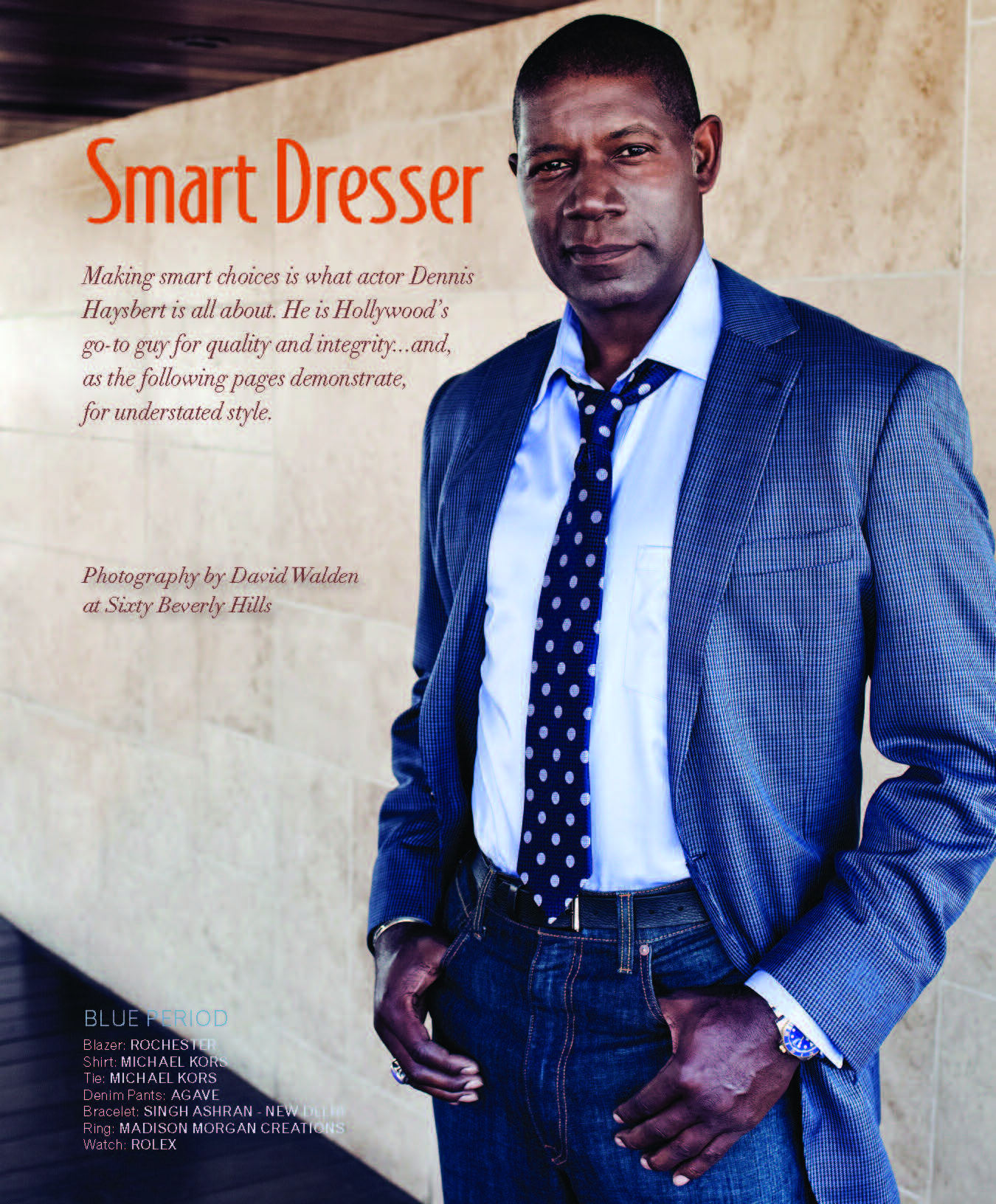
 In the Blink of an Eye
In the Blink of an Eye Eating Away the Blues
Eating Away the Blues 16 Going on 17
16 Going on 17
 Nuts to You
Nuts to You
 Vacation Souvenir
Vacation Souvenir
 Autism Breakthrough at Yale
Autism Breakthrough at Yale



 “The visualization [using robotic equipment] is far beyond anything we’ve had previously,” Dr. Zimmern says. “With robotics, we can perform surgeries that used to be impossible even via laparoscopy. We recently treated a patient who came to us with an abdominal tumor that took up his entire pelvis. The patient was also suffering from obesity, which made his case especially complicated. Even with laparoscopy, we wouldn’t have been able to remove the cancer without giving the patient a permanent colostomy. But the precision of our robotic equipment allowed us to do just that. So we’re learning there are particular instances and cases where the ability to carry out robotics-assisted surgery isn’t just advantageous—it’s really the ideal.”
“The visualization [using robotic equipment] is far beyond anything we’ve had previously,” Dr. Zimmern says. “With robotics, we can perform surgeries that used to be impossible even via laparoscopy. We recently treated a patient who came to us with an abdominal tumor that took up his entire pelvis. The patient was also suffering from obesity, which made his case especially complicated. Even with laparoscopy, we wouldn’t have been able to remove the cancer without giving the patient a permanent colostomy. But the precision of our robotic equipment allowed us to do just that. So we’re learning there are particular instances and cases where the ability to carry out robotics-assisted surgery isn’t just advantageous—it’s really the ideal.”

 In the secular world, we don’t think much about the retirement needs of Catholic priests, sisters and brothers. Yet, as exceptional and unwavering as they are in their devotion to others, they are just as susceptible to the challenges of aging as we are. Perhaps more so, in fact.
In the secular world, we don’t think much about the retirement needs of Catholic priests, sisters and brothers. Yet, as exceptional and unwavering as they are in their devotion to others, they are just as susceptible to the challenges of aging as we are. Perhaps more so, in fact. ests, we do support Franciscans, Dominicans, Benedictines, etc. However, it’s primarily sisters who are most in need of our help.”
ests, we do support Franciscans, Dominicans, Benedictines, etc. However, it’s primarily sisters who are most in need of our help.”





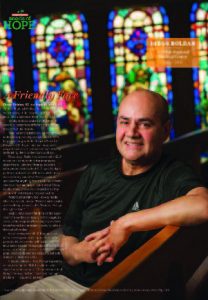 HEAVEN SENT
HEAVEN SENT PROGRESS IN THE WORKS
PROGRESS IN THE WORKS POWERHOUSE SURGEON
POWERHOUSE SURGEON FORMULA FOR SUCCESS
FORMULA FOR SUCCESS
 WOMAN OF INFLUENCE
WOMAN OF INFLUENCE THE DOCTORS ARE IN
THE DOCTORS ARE IN AIN’T IT GRAND!
AIN’T IT GRAND! Paragon Tap & Table • Mushroom Tart
Paragon Tap & Table • Mushroom Tart A Toute Heure/100 Steps Supper Club & Raw Bar
A Toute Heure/100 Steps Supper Club & Raw Bar The Black Horse Tavern & Pub • Summer Smoked Pork Chop
The Black Horse Tavern & Pub • Summer Smoked Pork Chop Piattino Neighborhood Bistro • Amalfi Seafood Pasta
Piattino Neighborhood Bistro • Amalfi Seafood Pasta The Office Beer Bar & Grill • Jersey “ Wake Up” Call
The Office Beer Bar & Grill • Jersey “ Wake Up” Call George and Martha’s American Grille • Sliced Hanger Steak
George and Martha’s American Grille • Sliced Hanger Steak The Office Tavern Grill • Slow Roasted Chicken Tacos
The Office Tavern Grill • Slow Roasted Chicken Tacos Arirang Hibachi Steakhouse • Pan Seared Scallops
Arirang Hibachi Steakhouse • Pan Seared Scallops Daimatsu • Grilled Oyster
Daimatsu • Grilled Oyster Publick House • Shepherd’s Pie
Publick House • Shepherd’s Pie Luciano’s Ristorante & Lounge • House Made Mafalda Pasta Inverno Style
Luciano’s Ristorante & Lounge • House Made Mafalda Pasta Inverno Style Morris Tap & Grill • Grilled Brined Pork Chop
Morris Tap & Grill • Grilled Brined Pork Chop Spirit: Social Eatery and Bar • Jersey Breakfast Bar Pie
Spirit: Social Eatery and Bar • Jersey Breakfast Bar Pie
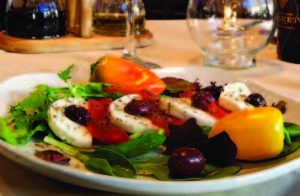 Café Z
Café Z Chestnut Chateau • Black Seabass
Chestnut Chateau • Black Seabass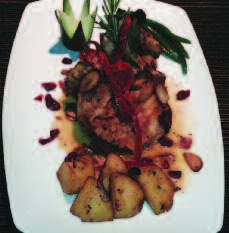 Mario’s Tutto Bene • Vinegar Pork Chops
Mario’s Tutto Bene • Vinegar Pork Chops Rio Rodizio • Brazilian Meats
Rio Rodizio • Brazilian Meats The Manor • Petite Filet Mignon & Short Ribs
The Manor • Petite Filet Mignon & Short Ribs

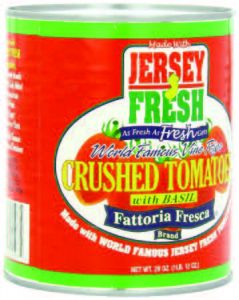 Bob Sickles explains that the local products excel over the mass-produced sauces. “While a larger production will process all the tomatoes, whether they are ripe or still green, and get a good sauce which has a higher acid flavor, the producers of the local sauces use hand-picked tomatoes and make sure they all are ripe. This creates a sweeter sauce, which is more work intensive and therefore has to be a bit more expensive. But it’s worth it.”
Bob Sickles explains that the local products excel over the mass-produced sauces. “While a larger production will process all the tomatoes, whether they are ripe or still green, and get a good sauce which has a higher acid flavor, the producers of the local sauces use hand-picked tomatoes and make sure they all are ripe. This creates a sweeter sauce, which is more work intensive and therefore has to be a bit more expensive. But it’s worth it.”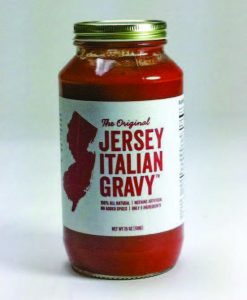 Not going on Bob’s word alone, we conducted a non-scientific tomato sauce taste test engaging four individuals with limited “foodie” credentials. In the mix were four New Jersey tomato sauces with slightly differing prices that can be purchased around the state—Nanina’s (25 cents per ounce) from Belleville, Manno’s (30 cents per ounce) from Bradley Beach, Jersey Italian Gravy (40 cents per ounce) from Ridgewood and Jar Goods (50 cents per ounce) from Hoboken—as well a bottle of Cabernet Sauvignon and a loaf of fresh ciabatta bread for dipping into the sauces.
Not going on Bob’s word alone, we conducted a non-scientific tomato sauce taste test engaging four individuals with limited “foodie” credentials. In the mix were four New Jersey tomato sauces with slightly differing prices that can be purchased around the state—Nanina’s (25 cents per ounce) from Belleville, Manno’s (30 cents per ounce) from Bradley Beach, Jersey Italian Gravy (40 cents per ounce) from Ridgewood and Jar Goods (50 cents per ounce) from Hoboken—as well a bottle of Cabernet Sauvignon and a loaf of fresh ciabatta bread for dipping into the sauces. According to our tasting panel, all the sauces were winners, yet different. The least expensive, Nanina’s, provides a very good, all-purpose kitchen staple. One taster’s favorite, Manno’s marinara, was particularly gutsy with herb and garlic flavors punching out on our palates. This sauce would be good with seafood. Delicious Jersey Gravy was thicker and sweet. And the rich, full-bodied Jar Goods was the densest sauce, almost like a paste, offering a fruity, sweet flavor.
According to our tasting panel, all the sauces were winners, yet different. The least expensive, Nanina’s, provides a very good, all-purpose kitchen staple. One taster’s favorite, Manno’s marinara, was particularly gutsy with herb and garlic flavors punching out on our palates. This sauce would be good with seafood. Delicious Jersey Gravy was thicker and sweet. And the rich, full-bodied Jar Goods was the densest sauce, almost like a paste, offering a fruity, sweet flavor.




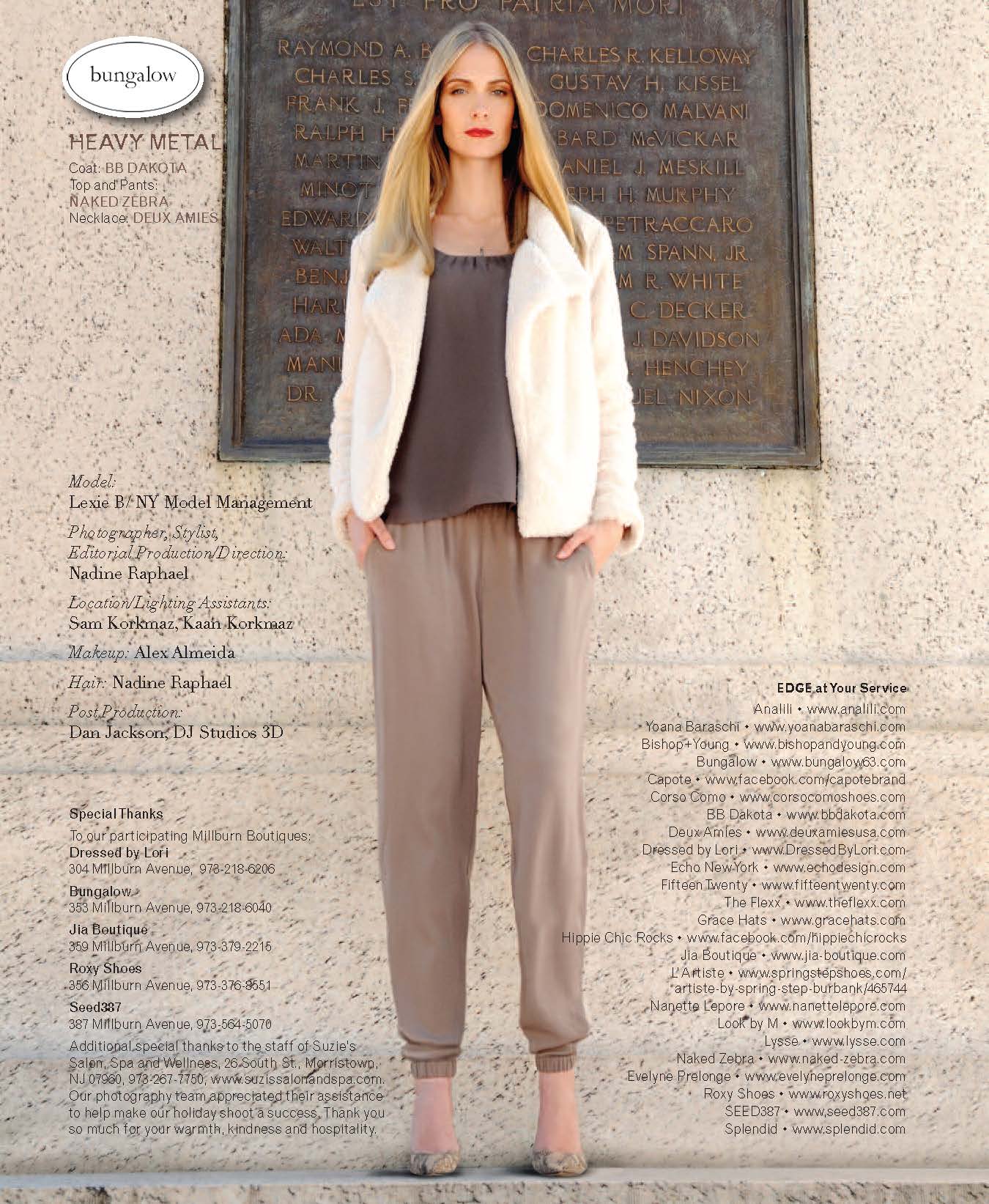



 Do you have a hot topic for Dr. D’Angelo and his Trinitas ER team?
Do you have a hot topic for Dr. D’Angelo and his Trinitas ER team?

 Angela reminds her fellow patients to never stop asking questions or learning about their own treatments. She encourages them to pay attention to their bodies and listen for cues, reminding them that nurses and doctors can only do so much; it’s up to the patients to communicate how they’re feeling and responding.
Angela reminds her fellow patients to never stop asking questions or learning about their own treatments. She encourages them to pay attention to their bodies and listen for cues, reminding them that nurses and doctors can only do so much; it’s up to the patients to communicate how they’re feeling and responding. 

 If you’ve just been diagnosed, or if you’ve been living with diabetes, quality medical care, encouragement and education can make a difference in your daily life.
If you’ve just been diagnosed, or if you’ve been living with diabetes, quality medical care, encouragement and education can make a difference in your daily life.



 So what’s my magic formula for buying smart? As I look back on my career and experiences as an art historian, dealer, appraiser and collector, I think it’s a little bit of patience, a fair amount of scholarship, and being in the right place at the right time. I offer as evidence four war stories…
So what’s my magic formula for buying smart? As I look back on my career and experiences as an art historian, dealer, appraiser and collector, I think it’s a little bit of patience, a fair amount of scholarship, and being in the right place at the right time. I offer as evidence four war stories…
 ART BUYER’S CHECKLIST
ART BUYER’S CHECKLIST

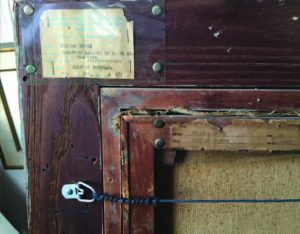 STEALING ONE FOR A C-NOTE
STEALING ONE FOR A C-NOTE QUICK! WHICH WOULD YOU PICK?
QUICK! WHICH WOULD YOU PICK? The Musicians painting on the left is what I would refer to as a decorative piece: pleasing to look at, easy to interpret and utilizing only a moderate degree of skill. It’s not a deep image, but it’s light, dynamic and charming, albeit somewhat superficial. The signature is completely indiscernible (this could be intentional) so I cannot look up the artist’s bio or see any type of track record. A closer look indicates materials that would not be considered high-quality or archival (stretcher wood, frame, canvas). In spite of this, it’s an enjoyable decoration, but that is its only value.
The Musicians painting on the left is what I would refer to as a decorative piece: pleasing to look at, easy to interpret and utilizing only a moderate degree of skill. It’s not a deep image, but it’s light, dynamic and charming, albeit somewhat superficial. The signature is completely indiscernible (this could be intentional) so I cannot look up the artist’s bio or see any type of track record. A closer look indicates materials that would not be considered high-quality or archival (stretcher wood, frame, canvas). In spite of this, it’s an enjoyable decoration, but that is its only value. This was a great find, and a team effort that turned out to be very profitable. To me, as an art historian, however, the more important piece was that through luck and persistence, I was able to re-open and re-invent an artist whose life’s work was relegated to a suburban garage. Wow. This amazing journey has made me now want to shed more light on other artists from the first quarter of the 20th century. It also got me more interested in illustrations. It was a beautiful circle.
This was a great find, and a team effort that turned out to be very profitable. To me, as an art historian, however, the more important piece was that through luck and persistence, I was able to re-open and re-invent an artist whose life’s work was relegated to a suburban garage. Wow. This amazing journey has made me now want to shed more light on other artists from the first quarter of the 20th century. It also got me more interested in illustrations. It was a beautiful circle.
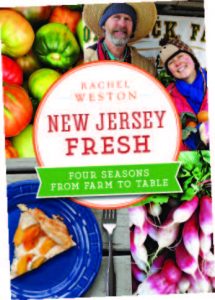




 The members of my international crew were actually part of a sort of extended family. My Ukrainian-American mother, Christina, had retired to a seaside village in Ecuador a few years ago. Her Ecuadorian friend, Maria, came up with the idea to make the trip to the islands (which sit roughly 600 miles off the Ecuadorian coast). It turns out Maria’s parents had actually lived on one of the islands, Floriana, some 70 years ago, when her father worked for the government. Yet neither Maria nor my mother had ever been.
The members of my international crew were actually part of a sort of extended family. My Ukrainian-American mother, Christina, had retired to a seaside village in Ecuador a few years ago. Her Ecuadorian friend, Maria, came up with the idea to make the trip to the islands (which sit roughly 600 miles off the Ecuadorian coast). It turns out Maria’s parents had actually lived on one of the islands, Floriana, some 70 years ago, when her father worked for the government. Yet neither Maria nor my mother had ever been. We began our journey in Puerto Ayora, most populous town on Santa Cruz and the tourist hub of the islands. There we began our love affair with Galapagos snorkeling. The biodiversity was astounding, though not always what I’d expected. I’ve done a lot of snorkeling in warm water, including the Red Sea, where colorful fish and plants live among stunning coral formations. In the frigid waters off Santa Cruz, the colors were muted and the sea floor crowded with starfish, sea cucumbers and various non-tropical fish species. In the deep water areas sharks swam stealthily below us.
We began our journey in Puerto Ayora, most populous town on Santa Cruz and the tourist hub of the islands. There we began our love affair with Galapagos snorkeling. The biodiversity was astounding, though not always what I’d expected. I’ve done a lot of snorkeling in warm water, including the Red Sea, where colorful fish and plants live among stunning coral formations. In the frigid waters off Santa Cruz, the colors were muted and the sea floor crowded with starfish, sea cucumbers and various non-tropical fish species. In the deep water areas sharks swam stealthily below us. THE LOCALS
THE LOCALS
 GALAPAGOS IN A BOX
GALAPAGOS IN A BOX
 My mother, who is nearly 70, is in pretty good health and full of energy. She observed that many of the activities may be too challenging for families with small children or people with a physical infirmity, even a slight one, due to some of the terrain like steep steps, long walks and the need to constantly climb in and out of small boats.
My mother, who is nearly 70, is in pretty good health and full of energy. She observed that many of the activities may be too challenging for families with small children or people with a physical infirmity, even a slight one, due to some of the terrain like steep steps, long walks and the need to constantly climb in and out of small boats.










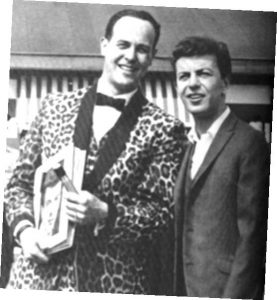


 Growth Spurt
Growth Spurt  Image Conscious
Image Conscious  Scrap Collector
Scrap Collector  Be Still My Heart
Be Still My Heart  Tunnel Vision
Tunnel Vision  Woodframe Ant Farms is calling your name. These relentless tunnelers create an ever-changing natural landscape and are a daily reminder of what can be accomplished when we all work together. The frames come first—in walnut, oak or cherry—and the ant colony follows a few days later after you’ve done a simple set up.
Woodframe Ant Farms is calling your name. These relentless tunnelers create an ever-changing natural landscape and are a daily reminder of what can be accomplished when we all work together. The frames come first—in walnut, oak or cherry—and the ant colony follows a few days later after you’ve done a simple set up. 
